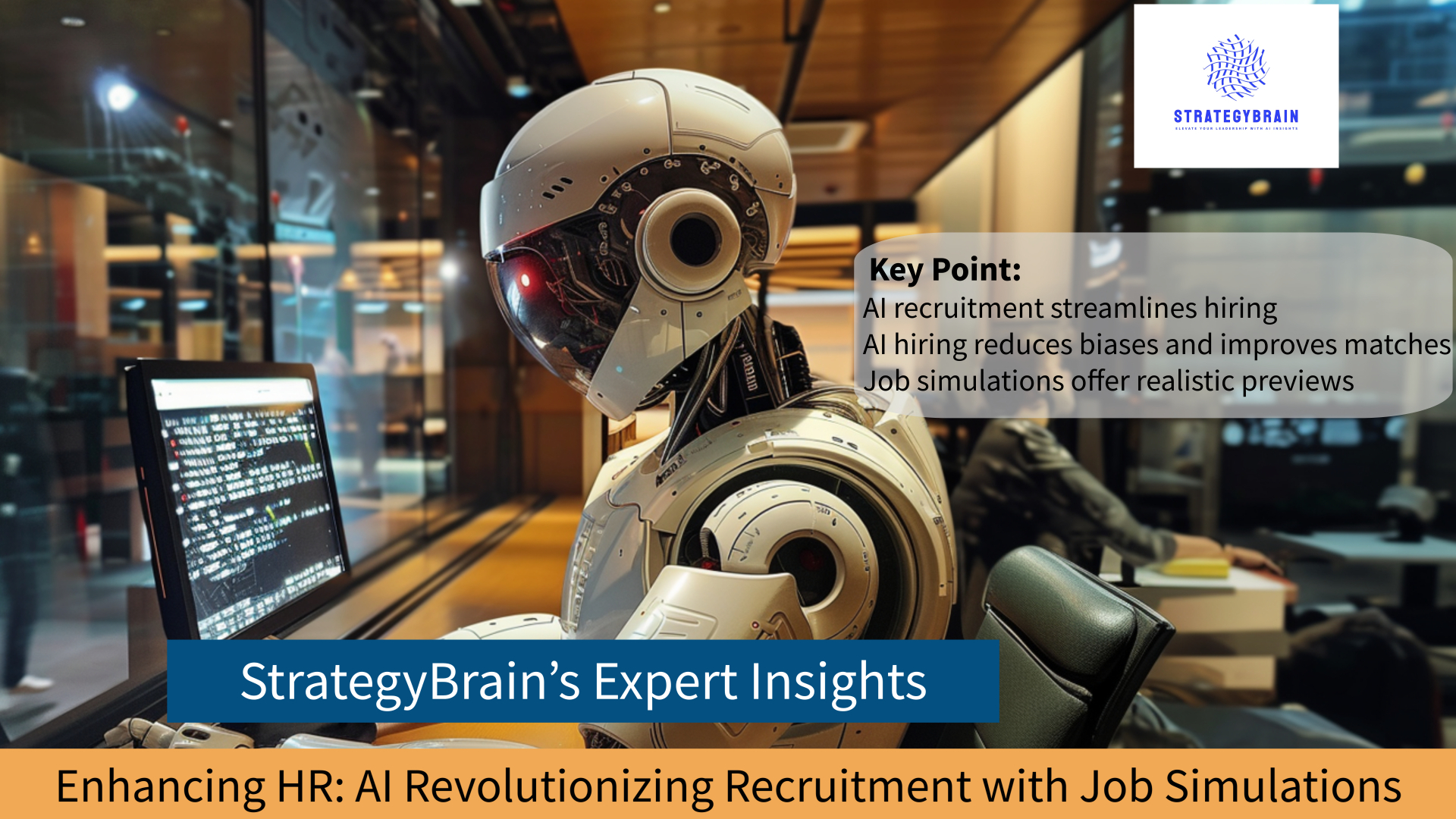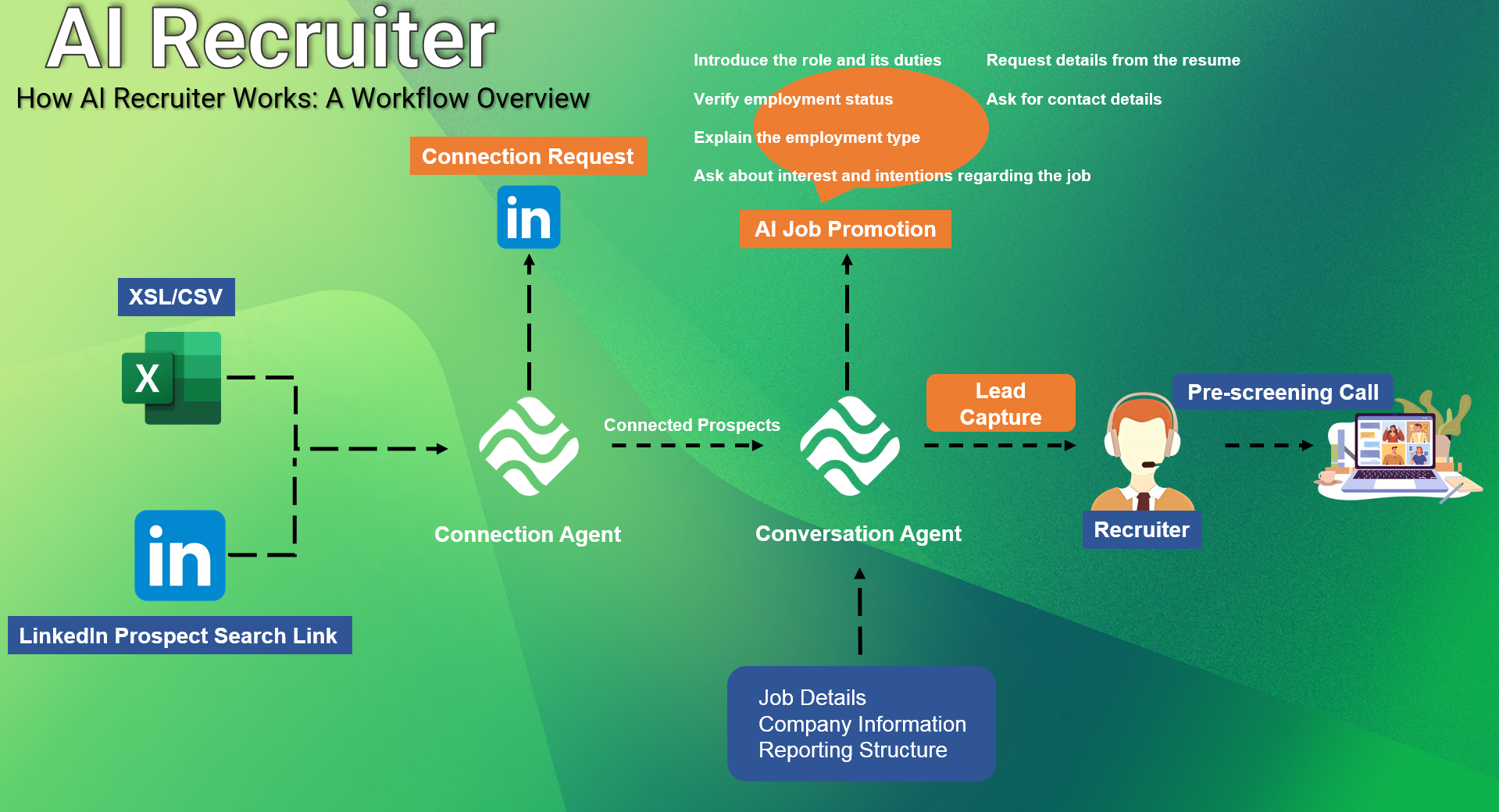Today’s fast-paced employment field makes finding the right fit for the organization an almost impossible task. Recruiters, managers, and HR specialists are currently experiencing immense pressure searching for skilled workers to drive their business to success. However, with the development of new technologies, such as the AI recruitment process, AI tools for hiring, and the benefits of AI hiring, recruiting qualified candidates has never been so easy and efficient.
The Role of AI in the Hiring Process
Bringing a Revolution to Recruitment
Artificial Intelligence has revolutionized the hiring process. AI can automate the most routine and time-consuming activities, allowing HR managers to concentrate on strategic employment goals. By processing vast data volumes, AI can aid in the search for the most suitable and talented employees and help businesses improve their recruitment process. Reducing the possibility of unconscious biases emerging in the hiring process, AI helps ensure better decision-making and select a candidate that should perfectly fit the position.
Advantages of AI-based Hiring
Streamlined Process: With the help of AI, the recruitment process can be sped up significantly through the automation of such routine activities as resume screening or the review of the initial applicants’ information.
Matching Candidates: When using AI, it is simpler to measure job requirements against the potential skills and knowledge of applicants and identify the best fit.
Reducing Biases: As opposed to “gut feelings” or other more subjective methods of decision-making, AI is based on data.
Providing Statistics: AI can also help learn more about hiring trends, candidates’ behavior, and performance data, offering an opportunity to analyze hiring outcomes.
Simulations of Job: Ensuring the Best Selection
Job simulations are exercises that mimic specific job duties and responsibilities. There are two main types of job simulation assessments:
Screening Tests: Typically include multiple evaluations, from a candidate’s ability to interact with others to professional knowledge. They are used to quickly identify employees who will perform best in an office environment by testing their abilities without actually hiring them.
Internals: Include tasks that an individual will have to complete during a job. In-depth job simulations can take a few days when assessing an applicant’s performance in a workplace situation.
Job simulations are scenarios that resemble real job conditions and provide detailed insights into a candidate’s skills, decision-making process, and behavior. The benefits of the use of job simulations for recruitment and selection purposes include the following:
- Accurate Assessment: Unlike traditional interviews or tests, simulations accurately measure the candidate’s abilities and potential job performance. According to data, the accuracy of predictions about candidates is higher when simulations are used in the process.
- Reduced Bias: Similar to AI-powered tools, simulations are based on data and objective parameters used for evaluation; thus, they reduce unconscious bias in hiring decisions.
- Cost-Efficient: By identifying the most. Others on the exam are unlikely to meet the criteria and will thus be unlikely to advance to further selection stages if it is used within the initial screening stage.
A job simulation assessment can be presented in the form of a take-home simulation or an on-the-job preview with various characteristics.
Take-Home Assessments
- Assignments given to candidates to be completed within a limited time frame.
- Focus on important skills and abilities required for the role.
- Designed to evaluate the ability of candidates to complete the task on time and according to the quality standards.
On-The-Job Previews
- Simulations of real job tasks that allow assessing candidates in a real-type environment.
- May include in-basket exercises, role-playing, group exercises, presentations, or case studies.
The Benefits of Job Simulations include
- Objective Assessment: Job simulations evaluate the candidates’ skills and abilities in an unbiased manner.
- Realistic Job Preview: The simulations require that candidates complete the real job tasks; this experience can help them understand better if the position and the organization are a good fit.
- Enhanced Hiring Accuracy: Job simulation helps to discard unqualified candidates and leave those that will really be suitable for the job position.
- Increased Candidate Experience: Ensuring candidates can perform job tasks in real-world scenarios, improving the overall hiring experience.
Best Practices for Implementing AI & Job Simulations
Integrate AI Tools Effectively
Use AI for Candidate Sourcing: AI-based platforms can be used for widening your search and finding highly qualified people. AI tools may help identify the candidates you cannot find with the use of the standard sourcing method because they need to have AI data analysis knowledge.
Automate Initial Screenings: Using AI to process and screen large numbers of applications has become a relatively common practice, and for good reason. AI could be leveraged to process applicant resumes and application forms and determine which potential employees’ skills and backgrounds are the best match with future requirements. Such screenings are incredibly effective at identifying potential candidates and covering thousands of resumes in a fraction of the time necessary if done by HR specialists.
Regularly Updating AI Algorithms: While beginning with an up-to-date algorithm is a necessity, it is irrelevant if it is not consistently updated to keep up with the changing conditions and hiring atmospheres. Updates include developments within the organization which change the requirements, as well as new trends in related markets and industries. By keeping the tool updated, it is possible to ensure that the quality of matches is maintained and potentially improved over time.
Streamline Workflow Integration: The transition between using HR tools and implementing AI-based solutions should be relatively straightforward and minimally disruptive. HR tools should be adopted for the purpose of making work easier and more efficient, but lack of proper integration could result in a significant decrease in the quality of work that could be performed. When properly integrated, the tools could be used in unison, making it easier for data to be passed through the system and better-informed decisions, including simulation results, to be made.
Design Effective Job Simulations
- Align Simulations with Actual Job
- Ensure Realism and Relevance
- Keep Simulations Concise
- Integration with Assessment Systems
Addressing Concerns and Ethical Considerations
- Transparency: To make your hiring process more efficient, here are more steps related to AI, job simulations, and ethical and privacy considerations:
- Privacy: Protect candidate data according to privacy laws and best practices. Make sure all data securely obtained properly stored, and is never used for anything other than hiring.
- Human Touch: Use automation to optimize, but do not make your decisions automatically. Use AI and simulations for filtering, but keep the human element to provide feedback and communicate with candidates when the situation deviates from a standard.
- Ethical oversight: Since the algorithms and simulations may change over time, used biased data, or have other ethical considerations, periodically review the processes and include diverse teams into the development and continuous oversight of the system to make sure your hiring is ethical.
Case Studies
Companies implemented AI and job simulations into their hiring processes and experienced immediate positive results.
Tech Innovators Inc.: A large tech company, implemented StrategyBrain’s AI resume screening and job simulations for hiring software engineers. The hiring time was reduced by 40%, the project completion rates went up by 30% due to improved hiring quality. StrategyBrain’s advanced algorithms helped Tech Innovators accurately match candidates’ skills and experience with job requirements, and its simulations tested candidates’ logical thinking, coding, and other relevant skills.
Groupe Financier Mondial de Paris: One of the major players in the financial domain, used StrategyBrain’s job simulations to hire customer service employees. Thanks to the accurate evaluation of the candidates’ performance in real-world conditions, the company was able to reduce the employee turnover rate by 25% and increased the customer satisfaction rate by 20%. The hypothesis test conducted by StrategyBrain has shown that the use of the AI recruitment software has made it possible for the managers to identify not only the performance-competent employees but the performance-appropriate staff: “Performance-competent candidates are only 55% likely to be performance-appropriate at Groupe Financier Mondial de Paris; at StrategyBrain, that figure is 80%”. In the end, the company was able to make sure that the customer service staff members were not only competent but also could be seamlessly integrated into the corporate culture and the company’s overall philosophy.
Challenges and Pitfalls to Overcome
- The cost of the initial investment: Although the use of AI requires substantial investment at first, the long-term effects of the technology use in HR can hardly be underestimated, as it improves the efficiency of the recruitment approach and makes the process of finding and selecting the staff of outstanding quality;
- Algorithmic bias: Regular checks of the AI system must be carried out to make sure that the system functioning is unbiased and yields fair results in the evaluation of the performance of job simulation candidates;
- Candidates’ resistance: Some job applicants may feel skeptical about the use of AI and simulations. These concerns can be addressed with the help of communication and transparency.
Strategies for Future
- Stay informed: Given the pace at which the modern technologies are evolving, it is imperative to stay updated about the latest discoveries and new software available;
- Improve continuously: Tweak your recruitment strategies regularly to achieve the optimal performance in job simulation activities.
In conclusion, AI and job simulations represent versatile tools that help improve the efficiency, accuracy, and overall quality of the recruitment process. By using AI and job simulation, HR managers and leaders are likely to make the right decision when selecting the staff, avoiding bias and other negative effects on the recruitment process. If you are interested in how AI software and job simulations can be included in the recruitment process of your domain, you are welcome to contact StrategyBrain team for expert advice.
Question: In what ways does AI enhance the recruitment process?
Answer: AI streamlines recruitment by automating resume screening, matching candidates more effectively, minimizing biases, and offering data-driven insights to refine hiring strategies.
What purpose do job simulations serve in recruitment?
Question: Why are job simulations an important tool and how do they work?
Answer: Job simulations involve providing candidates with certain tasks similar to everyday work to determine their ability and potential to do the job. This provides a fair representation of how they would perform the job and gives a preview of the job to the candidate as well.
What steps should I follow to add AI to my recruiting process?
Question: What steps should I follow to start using AI in recruiting?
Answer: Identify the areas, such as finding candidates or resumes’ checking, where AI could be more effective. After that, choose the proper AI tools to use and, most importantly, let the candidates know about the tools used in the process.
Are job simulations suitable for all types of jobs?
Question: Can job simulations be organized for all job positions?
Answer: Job simulations can be arranged and applied to any position. They are versatile enough and can be customized according to the requirements of various roles, from technical jobs to customer servicing.
How can I respond to my candidates being uneasy about AI in the hiring process?
Question: What can I do to assure my candidates of the application of AI within the recruitment process?
Answer: Proper description is one of the first things to do. Candidates have to be informed concerning the application of AI, the benefits they get due to it, and the safety of their data.

